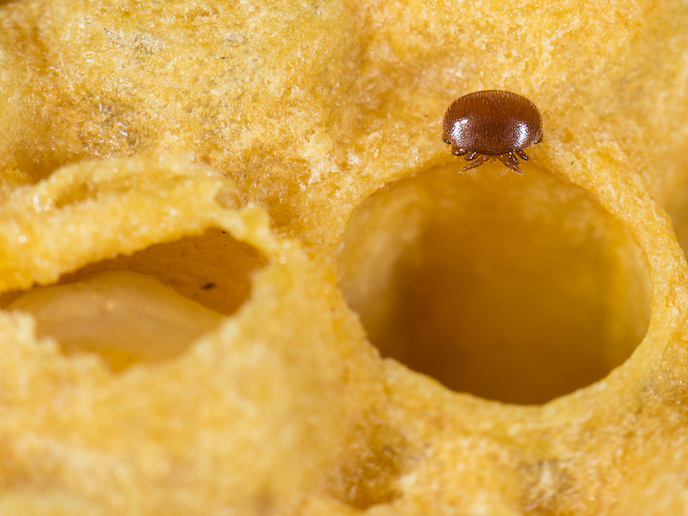Laser technique offers safe and efficient varroa removal from bees
Pollination is where pollen is transferred from the male part of a plant to a female part, enabling fertilisation. Bees are responsible for the pollination of around 80 % of European crops and wild plants. Annually, it has been calculated that honey bees, bumblebees and wild bees contribute at least EUR 22 billion to the agriculture industry in Europe, EUR 265 billion annually worldwide. Alarmingly, despite this economic and environmental importance, over the last few decades the number of bees in Europe is thought to have decreased by almost 25 %. Besides the use of pesticides, one of the key causes of the shrinking honey bee population is the parasitic mite varroa. Varroa reproduces in the bee hive, where it attaches to both immature and adult bees, feeding off their body fat, thereby weakening or killing the bee. The EU supported V-eliminator project has developed the first micro-targeted laser-based system for the mass elimination of varroa on honey bees. It offers a much safer and more efficient solution than current alternatives (chemical and mechanical removal).
Varroa elimination
The V-eliminator system (with the product actually called V-laser) consists of a camera, galvo scanner, low-power laser and single-board computer, positioned at the entrance of the hive. The system uses computer vision technology to track bees and detect potential varroa infestations. It is managed by software, which, as well as the computer vision algorithms to identify the mites, includes a control system which, on detection, burns the mites with the laser beam. The system can be powered by a solar battery or an AC adapter. Crucially, unlike traditional methods of mite control such as mechanical removal which harms bees or chemical removal which may result in side effects for the bees, the V-laser process is safe for the bees. “It all started with a beekeeper, who is also an inventor and was very unsatisfied with existing solutions. Initially it felt like a solution usually only seen in science fiction films. Now we are making it a reality,” reflects project coordinator Andrej Stanković, based at the Zorn Group in Slovenia. With both beam deflection optics (where a laser beam can be deflected on two axes for efficiency) and optical vision now operational, lab testing has been conducted on varroa mites to determine the necessary laser strength and shooting times.
The contribution of apiculture
Through pollination, bees and other pollinators ensure the reproduction of a range of cultivated and wild plants (key to global food production and food security) while also effectively preserving biodiversity. Efforts to mitigate the declining bee population are problematic, for example hand-pollination is extremely labour-intensive, slow and expensive. “Using V-laser will benefit European beekeepers in three ways. Firstly, by increasing their competitiveness with lower production costs. Secondly, increasing yield, with the permanent elimination of varroa resulting in healthier bees. Lastly, cultivating a revitalised interest in beekeeping,” says Stanković. With a prototype now ready, the team are currently seeking investments to develop the technology for market readiness. The anticipated steps to reach this point include: larger-scale performance testing in laboratory and real-life conditions; miniaturisation of the housing; integration of components; as well as improvement to the laser driver, galvo control engine and computer vision software.
Keywords
V-eliminator, v-laser, bee, varroa, mite, parasite, food security, apiculture, pollinator, biodiversity, pesticide



